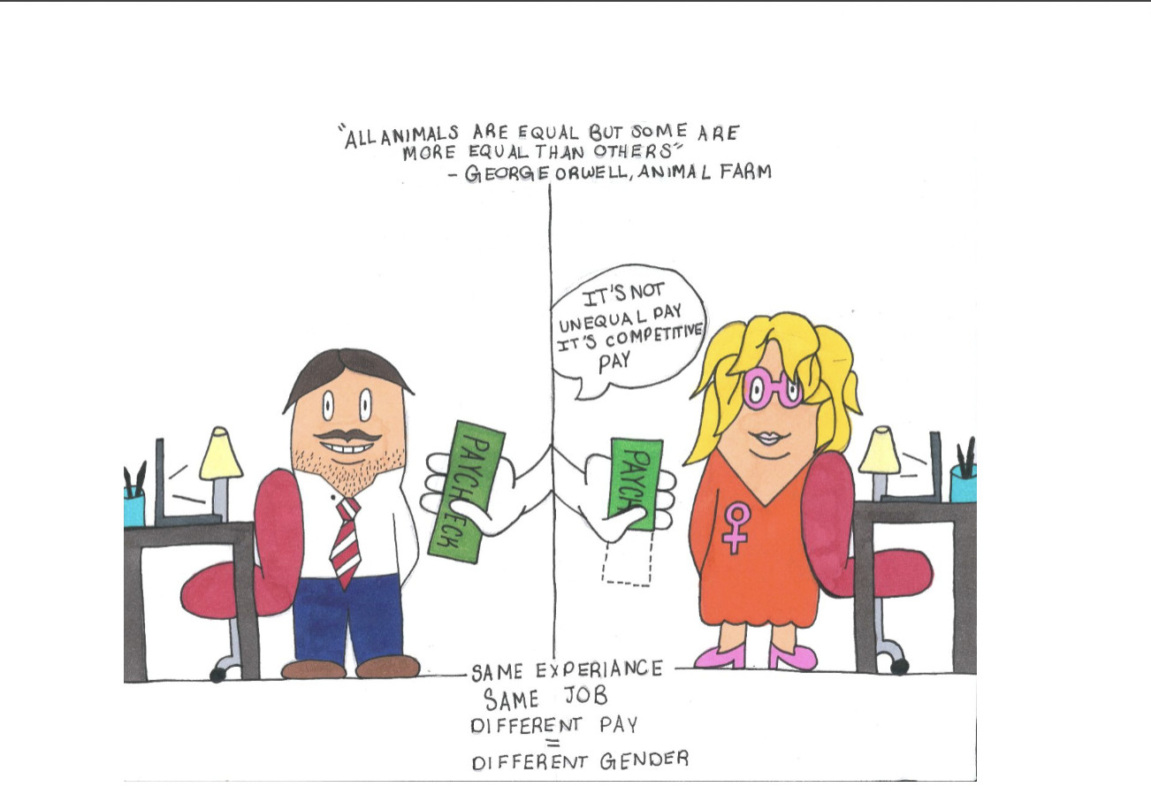
Tapping into kids’ creativity to teach news literacy
Educator Mary Ellen Wessels realized that she has been teaching media and news literacy across grade levels and disciplines for some time. She just never called it that.
“Honestly, it’s only fairly recently that I’ve been aware that I’m teaching media literacy, but in reflection, even when I taught 4-year-olds, I tried to include media literacy,” said Wessels, a humanities and civics teacher for grades six through eight at Gate City Charter School for the Arts in Merrimack, New Hampshire, a nonprofit public charter school.
When teaching preschoolers, she would introduce basic concepts in conversations largely built around visuals. For example, her class compared differences between toy ads “for boys” and those “for girls” or looked at how TV depicted people or events compared to real life.
With middle school students, Wessels builds on their understanding of concepts from one grade to the next. Sixth graders focus on becoming more aware of how media is used, asking questions around who is telling the story and why. Seventh-graders explore how primary sources might provide two different versions of the same story. By eighth grade, her classes are studying propaganda in a historical context.
Students as media savvy creators
“I’m always trying to get students to think of themselves as creators, so I’m trying to make media literacy one of their civic duties. You need to use your media savvy,” Wessels said. “When it comes to social media, I want my students to think critically and use it for positive things.”
And, she believes news literacy can and should be taught across disciplines.
She recently wove news literacy into her eighth grade ELA classes using NLP’s Checkology® virtual classroom lesson “Power in Art: The Watchdog Role of Editorial Cartoonists.” It focuses on the history and current role of this important form of opinion journalism. Students created their own editorial cartoons based either on a line from the book Animal Farm by George Orwell or a current topic they cared about.
Visit from editorial cartoonist
Wessels then invited Signe Wilkinson, a longtime editorial cartoonist at the Philadelphia Daily News who is featured in the lesson, to a virtual classroom visit.
She has been visiting classrooms in person, and since the pandemic, virtually, for years and truly enjoys it. “Right before the pandemic, I went to a middle school in Malvern (Pennsylvania) and spoke to four or five classes in a row about cartooning generally,” said Wilkinson, the first woman to win the Pulitzer Prize for editorial cartooning. “It was fascinating because they don’t get newspapers, so they don’t see cartoons in the way I see cartoons.”
Her classroom conversations start with a quick history of communication through visual imagery, beginning with the first cave paintings and moving on to Martin Luther, the 16th century German theologian and Protestant reformist who used illustrated engravings to reach people who couldn’t read. She also discusses the work of 19th century American cartoonist Thomas Nast and political cartoons from World War II, before sharing her own drawings.
“I don’t want it to be all about me,” says Wilkinson, whose work can be seen in The Philadelphia Inquirer.
An empowering connection
Wessels said Wilkinson was engaging, and her students made the connection between using visual art and written language to persuade people and make them think. “Many of our students are naturally visual thinkers and artists. And a lot of them identified with how she struggled to pay attention in class but always wanted to draw.”
Wilkinson told the class of the challenges she faced in establishing her career, noting that she was one of only a few women political cartoonists when she began, and the field remains male dominated. Some students were surprised by the idea of creating cartoons as a career or the possibility that they could be an activist and use their voice and art at the same time.
“It is so empowering to have students get encouragement from professionals in the field,” Wessels said.
Wilkinson boiled down her message to this: “The main thing is to let kids realize that you don’t have to just write news stories about what happens. You can use visual imagery for all sorts of things when you want to reach people in different ways, because people learn in all different ways.”
Educators: To arrange for Wilkinson to visit your classroom, contact her at [email protected].